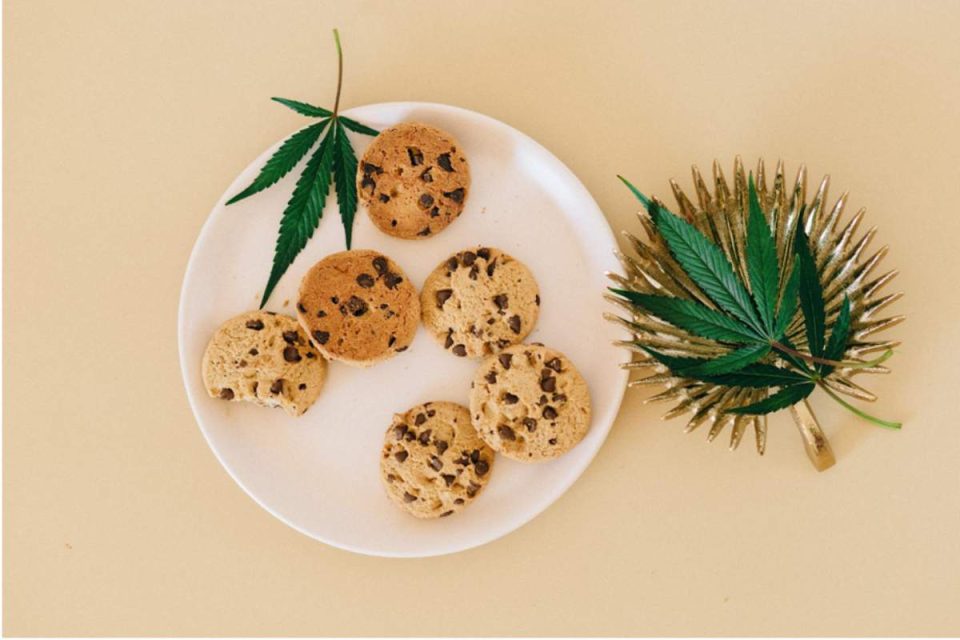As more and more states and countries legalize marijuana for recreational and medicinal use, cannabis cuisine has transcended from a hidden subculture to the mainstream gastronomic world.
As a result, this versatile plant can easily find its way into various dishes, adding an exciting twist and myriad health benefits.
In this guide, you will learn a variety of delicious dishes and culinary techniques for incorporating cannabis into your home cooking.
Table of Contents
The Basics
Before diving into the recipes, it’s crucial to understand the process of decarboxylation and proper dosage.
Decarboxylation is heating raw cannabis to activate its psychoactive compound, THC, and its non-psychoactive counterpart, CBD. Without decarboxylation, consuming natural cannabis won’t have the desired effects.
When it comes to dosage, it’s best to start slowly and increase as needed, keeping the golden rule of edibles in mind: you can constantly add more but can’t take it out.
Calculate your preferred THC or CBD content and adjust your recipes accordingly. Remember, it can take up to two hours to feel the full effects of cannabis-infused food, so be patient and don’t overindulge.
Many unique flavors and effects can be achieved by combining your cannabis-infused ingredients with different cannabis strains.
The flavor combinations are endless, and experimenting with exotic weed seeds can bring new dimensions to your culinary creations.
Don’t be afraid to try new strains to find the perfect match for your recipes; diverse flavors can be an exciting addition to the cannabis dining experience.
Two must-have ingredients for any cannabis recipe are cannabis-infused butter, cannabutter, and cannabis-infused oil.
Both serve as the basis for various recipes and are made by extracting cannabis’ active properties using a fat-based substance like butter or oil. Here’s how:
- Decarb your cannabis by baking ground buds for 35–40 minutes at 240°F (115°C) in the oven.
- Melt butter or warm oil (e.g., coconut, olive, vegetable) in a saucepan over low heat
- Add the decarboxylated cannabis to the melted butter or oil
- Simmer for 2-3 hours, stirring occasionally, keeping the temperature below 200°F (95°C) to prevent burning
- Remove from heat and let cool slightly before straining through a cheesecloth into a suitable container
Sweets, Drinks, and Condiments
Sweet treats like cookies, brownies, and candies have long been famous for cannabis-infused recipes.
Using your cannabutter or oil, you can create delicious cannabis-infused desserts: Swap regular butter with cannabutter in your favorite recipe for cookies or brownies.
With this added twist, you can experiment with different brownie or cookie flavors and recipes to see which you like best.
Gummies can also be an excellent option for cannabis candy. Combine cannabis-infused coconut oil with fruit juice, sweetener, and unflavored gelatin, then pour into molds and let set in the fridge until firm.
Infuse your beverages with cannabis by adding tinctures, or create cannabis-infused concoctions using simple syrups made with cannabutter.
For example, for tea or coffee, mix in a few drops of cannabis tincture or add a small spoonful of cannabutter to your hot drink. Or, for a cold drink with a kick, try cannabis in some refreshing lemonade.
First, prepare a lemonade base, then add a cannabis-infused simple syrup created by warming cannabutter, sugar, and water.
Another way to incorporate cannabis into your cooking is through condiments. Using cannabis-infused oils, you can create a variety of dressings, sauces, and dips to enhance your favorite dishes.
Examples include cannabis-infused salad dressing, made by whisking cannabis-infused olive oil with vinegar and your choice of herbs, or a cannabis-infused aioli, created by combining cannabis-infused mayonnaise, garlic, and lemon juice for a tangy spread.
So get creative and elevate your condiments with cannabis.
Mary Jane Meals
Cannabis cuisine isn’t limited to sweets or add-ons. You can also use your cannabis-infused oil to create various delectable savory dishes.
For example, use cannabis-infused olive oil as a base for a flavorful pasta sauce or drizzle cannabis-infused oil over a fresh, homemade pizza before baking.
You can even spread cannabutter on the outside of your bread before grilling to make a delicious cannabis-infused grilled cheese sandwich.
For those with dietary restrictions or preferences, cannabis cuisine can be easily adapted to accommodate vegan and gluten-free diets.
For example, replace animal-derived ingredients, such as dairy, with plant-based alternatives, or use gluten-free flour in your recipes.
Examples of vegan-friendly, gluten-free dishes include cannabis-infused avocado chocolate mousse, quinoa-stuffed bell peppers cooked in cannabis-infused oil, or gluten-free cannabis-infused granola bars.
When serving cannabis-infused dishes to friends and family, it’s essential to communicate the type and dosage of cannabis in each serving.
Proper labeling of portions and keeping non-infused options available can prevent accidental over consumption.
Additionally, consider offering a mix of THC and CBD-infused dishes to accommodate individual preferences and sensitivities.
Together, these practices will help to create a safe and enjoyable cannabis dining experience for all.
Conclusion
Experimenting with cannabis cuisine can be a fun and delicious way to enjoy the benefits of cannabis, but remember to start slow and adjust accordingly to avoid over consumption.
With basic cannabis-infused ingredients like butter and oil and a little creativity, exploring the world of cannabis cuisine can add a delightful twist to your home cooking.

